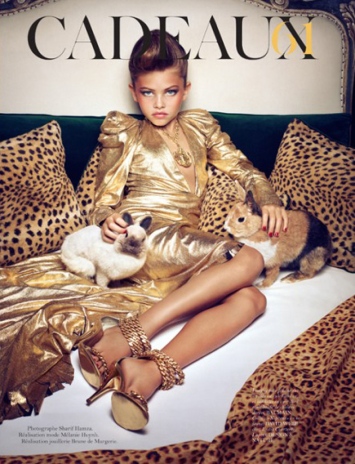Well well! It’s been 6 weeks since i had my panic attack from having absolutely no idea of how to write a blog! What a monumental moment! But hey – look at me now. During this time i’ve been inclined to excavate the ‘inner-workings’ of my mind on topics that i had never even considered before i took this subject. So let’s revise!
BCM110 has undoubtedly made this an interesting ride. From week 2 we absorbed the concept of “television makes you fat” and what the media is currently being blamed for within society. Through this we recognized that audiences are portrayed as gullible victims and individuals who are easily influenced. But is media the only factor contributing to ‘why our child is fat? Why are they violent? Why are they an introvert?’ etc. We concluded this with a big fat NO.
Week 3 introduced me to ‘The Image cannot lie’ and the affects of semiotics on the denotation of an image. Translating a sign, or signifier, to it’s literal meaning. Here, I learnt that all images are representations and their relationship with what they represent is arbitrary. Ideologies also came into play with the conclusion that an individual’s interpretation of a media text arises from their own ideological position.
To continue, lecture 4 highlighted the controversial debate of media ownership and sparked the question, does it really matter who owns the media? Personally, i found this topic the most interesting purely because it was something i was completely unaware of beforehand and now it’s a topic i bring up with friends and family. I am now mindful that diversity in media ownership is declining, increasing bias as well as the legacy of the Frankfurt School which displayed the cultural and critical research into the role of the media and what is wrong with society in regards to media.
The mediated public sphere was the topic of week 5. This concept was probably the most difficult for me to grasp but let’s see how i go. The public sphere is perceived by McKee to be a metaphor of how individual human beings come together to exchange information and opinions about what matters to them in society. The mediate public sphere can be witnessed within a majority of mass media and has also been scrutinized for being too trivialized, too commercialized, too fragmented, too apathetic and relies too much on spectacle.
And now we’re here in week 6 and the topic we are faced with is media issues as well as the concept of moral panic which can be evidently seen when considering today’s youth. A case of moral panic in children is exhibited through the 10 year old model Thylane Blondeu who appeared in a 2011 issue of French Vogue. The cause for concern was exhibited by her sultry poses and looks ‘beyon d her years’, all while being dressed in unsteady high-heels, a deep v-neck dress showcasing her ‘cleavage’ and full-blown makeup. So is this considered child exploitation? Some individual’s don’t consider this to be a problem. That she is simply doing a job. While others are disgusted by the excessive sexualisation of this young girl. The opinions of Liz Lockhart state, “The Vogue spread is entitled ‘Cadeaux’ – the French word for gift. What a gift these pictures are for perverts and paedophiles“.
d her years’, all while being dressed in unsteady high-heels, a deep v-neck dress showcasing her ‘cleavage’ and full-blown makeup. So is this considered child exploitation? Some individual’s don’t consider this to be a problem. That she is simply doing a job. While others are disgusted by the excessive sexualisation of this young girl. The opinions of Liz Lockhart state, “The Vogue spread is entitled ‘Cadeaux’ – the French word for gift. What a gift these pictures are for perverts and paedophiles“.
So is this just illustrating ‘fashion’? Is it really just a case of art? Chloe Angyal suggests not. “This isn’t edgy. It’s inappropriate, and creepy, and I never want to see a 10-year-old girl in high-heeled leopard print bedroom slippers ever again“.
It is also important to address not only how it affects Thylane herself but also how it affects the children like her. The messages it is sending to them. Shari Miles-Cohen of the American Psychological Association (APA) states, “We don’t want kids to grow up too fast…We want them to be able to develop physically, emotionally, psychologically and socially at appropriate rates for their age”. Further experts from the APA suggest, “Sexualized images can have lasting effects on the young girls who see them.. It can affect how girls think about femininity and sexuality, promoting ‘appearance and physical attractiveness’ as key values. It’s also linked to low self-esteem, eating disorders and depression”
In conclusion, I’ve ended surprising myself with how much I’ve enjoyed pondering topics and learning from my peers and academics each week. Who knew an assessment could be so fun haha.
That’s a wrap!!
Hannah.
References:
– Turnbull, S 2014, BCM110 Lecture Slides 2, 3, 4, 5 & 6, University of Wollongong
– Johanson, M 2011, ’10-Year-Old Vogue Model Sparkes Controversy With Sexualised Photo Spread’, ibttimes.com, viewed 13/04/14, < http://www.ibtimes.com/10-year-old-vogue-model-sparks-controversy-sexualized-photo-spread-824691 >
– Lockhart, L 2011, ‘Thylane Lena-Rose Blondeau Vogue Images Labelled ‘Obscene’ by Mental Health Advocates’, mentalhealthy.co.uk, viewed 13/04/14, < http://www.mentalhealthy.co.uk/news/712-thylane-lena-rose-blondeau-vogue-images-labelled-‘obscene’-by-mental-health-advocates.html >
– Moisse, K 2011, ’10-Year-Old Model’s Grown-Up Look: High Fashion or High Risk?’ abcnews.go.com, viewed 13/04/14, < http://abcnews.go.com/Health/w_MindBodyResource/10-year-models-grown-high-fashion-high-risk/story?id=14221160 >
– Image: viewed 14/04/14, jasperandjane.com < http://jasperandjane.com/child-model-thylane-blondeau/ >